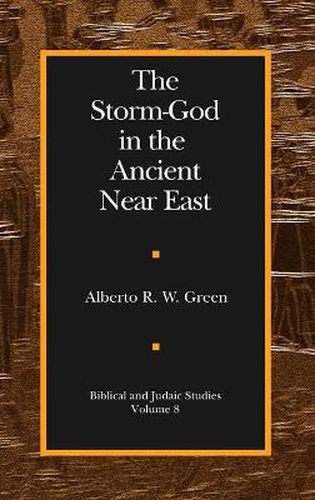Readings Newsletter
Become a Readings Member to make your shopping experience even easier.
Sign in or sign up for free!
You’re not far away from qualifying for FREE standard shipping within Australia
You’ve qualified for FREE standard shipping within Australia
The cart is loading…






In this comprehensive study of a common deity found in the ancient Near East as well as many other cultures, Green brings together evidence from the worlds of myth, iconography, and literature in an attempt to arrive at a new synthesis regarding the place of the Storm-god. He finds that the Storm-god was the force primarily responsible for three major areas of human concern: (1) religious power because he was the ever-dominant environmental force upon which peoples depended for their very lives; (2) centralized political power; and (3) continuously evolving sociocultural processes, which typically were projected through the Storm-god’s attendants. Green traces these motifs through the Mesopotamian, Anatolian, Syrian, and Levantine regions; with regard to the latter, he argues that Yahweh of the Bible can be identified as a storm-god, though certain unique characteristics came to be associated with him: he was the Creator of all that is created and the self-existing god who needs no other.
$9.00 standard shipping within Australia
FREE standard shipping within Australia for orders over $100.00
Express & International shipping calculated at checkout
In this comprehensive study of a common deity found in the ancient Near East as well as many other cultures, Green brings together evidence from the worlds of myth, iconography, and literature in an attempt to arrive at a new synthesis regarding the place of the Storm-god. He finds that the Storm-god was the force primarily responsible for three major areas of human concern: (1) religious power because he was the ever-dominant environmental force upon which peoples depended for their very lives; (2) centralized political power; and (3) continuously evolving sociocultural processes, which typically were projected through the Storm-god’s attendants. Green traces these motifs through the Mesopotamian, Anatolian, Syrian, and Levantine regions; with regard to the latter, he argues that Yahweh of the Bible can be identified as a storm-god, though certain unique characteristics came to be associated with him: he was the Creator of all that is created and the self-existing god who needs no other.